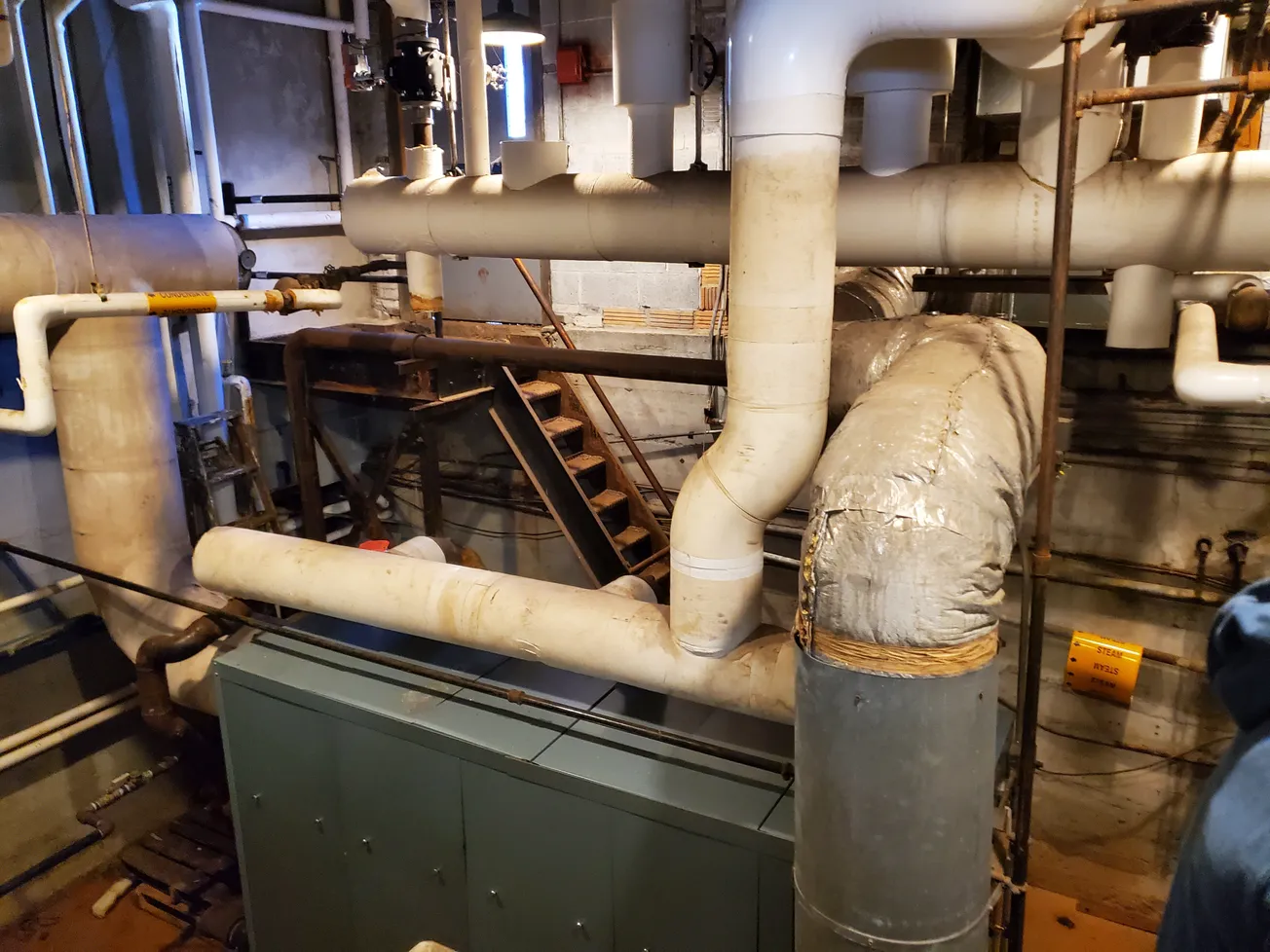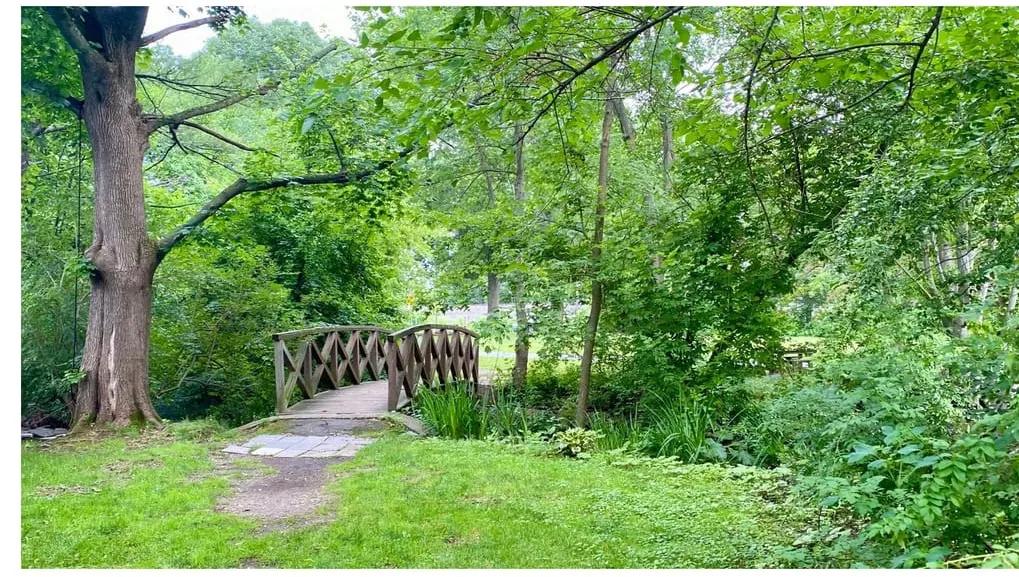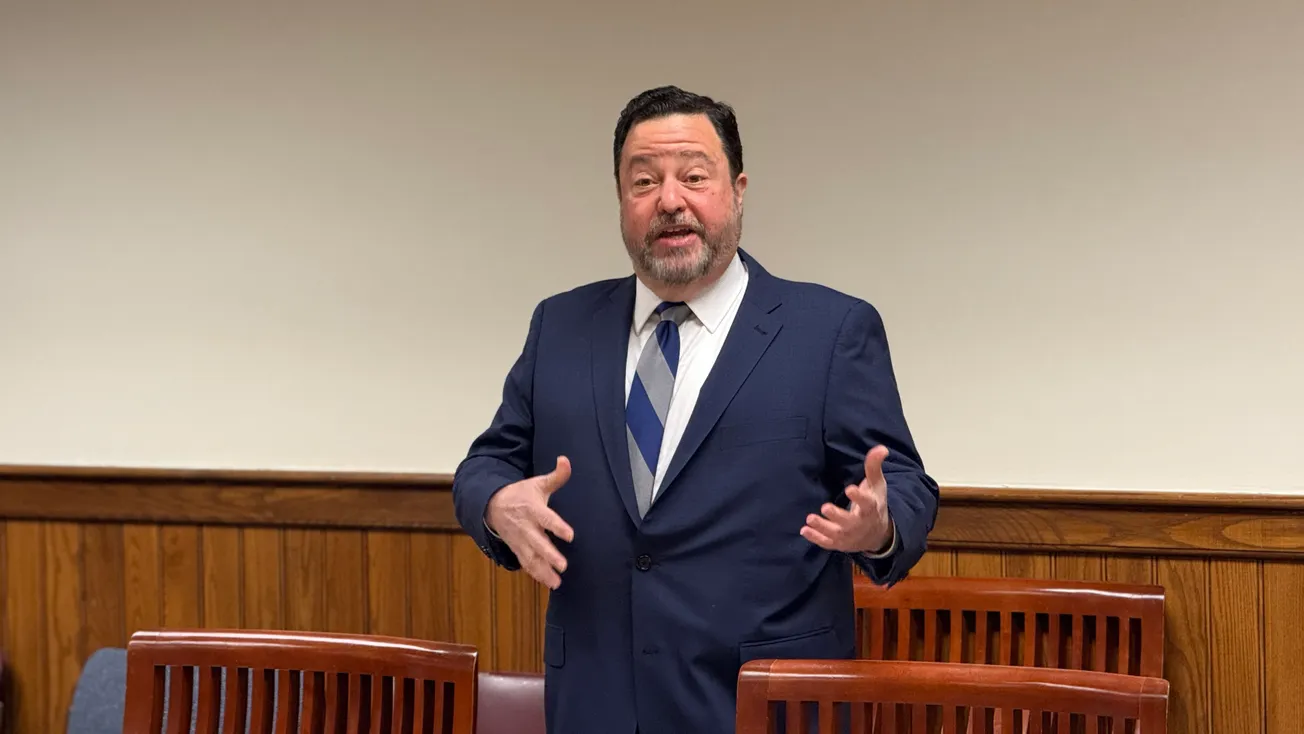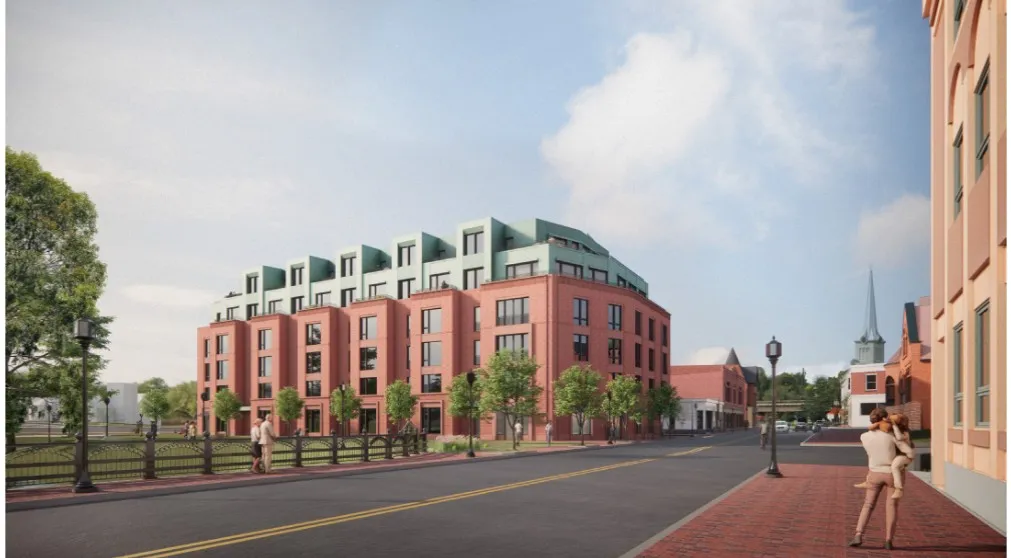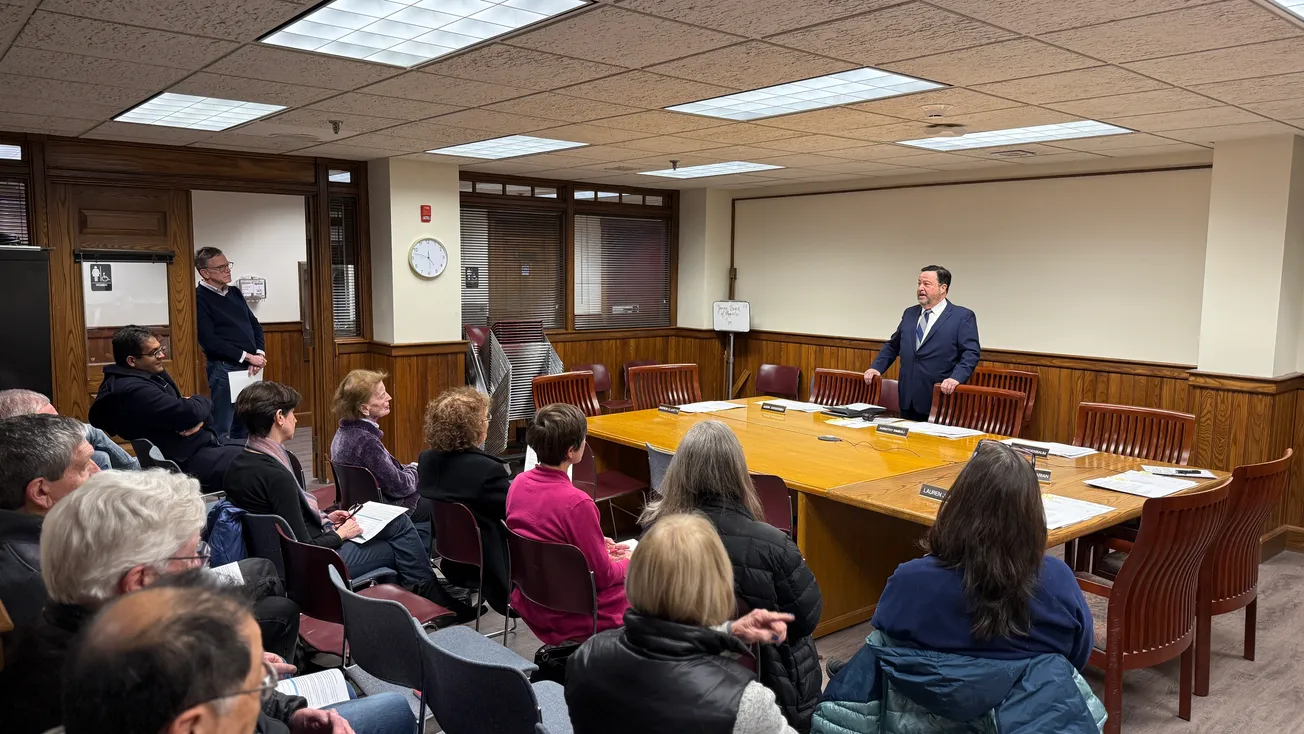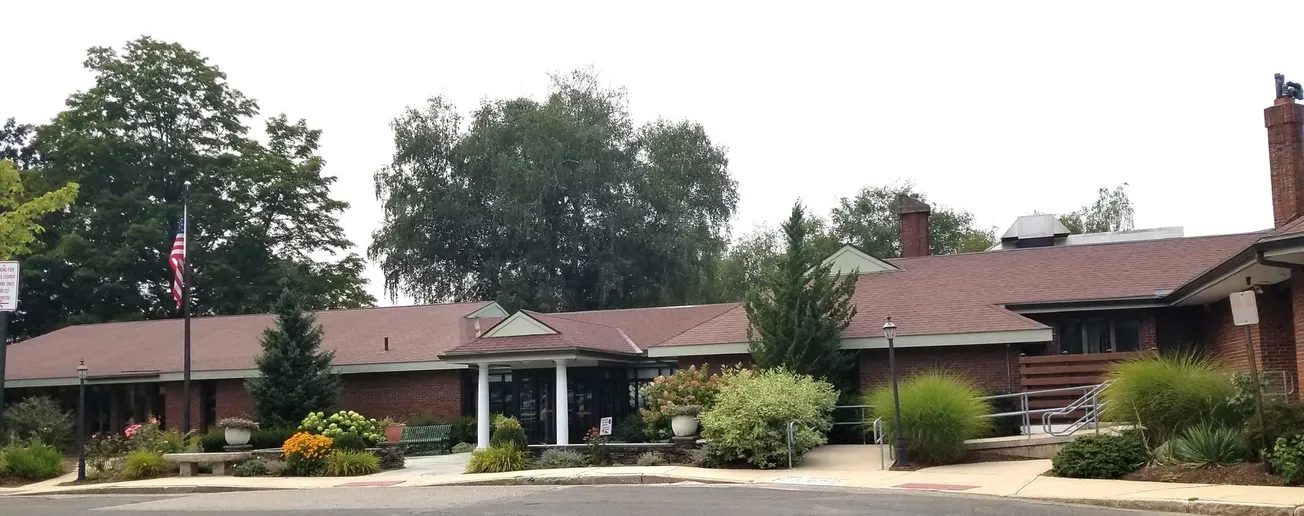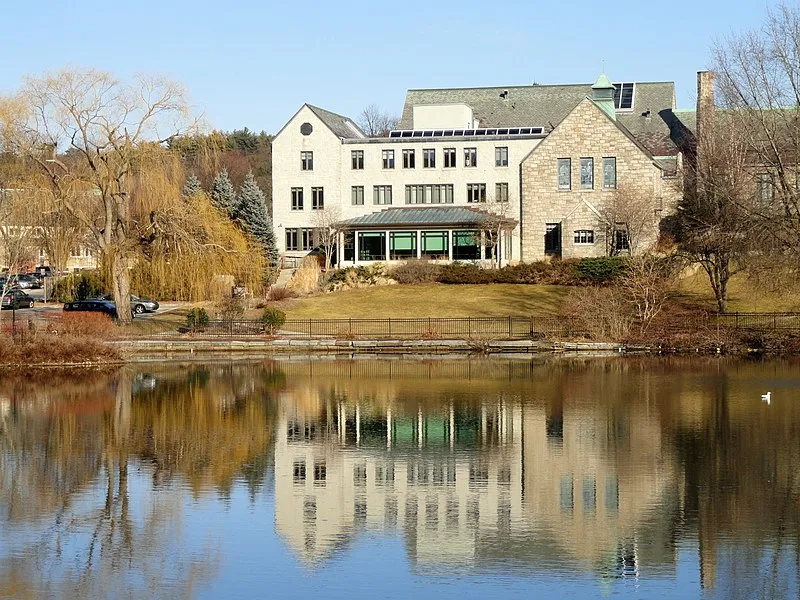Table of Contents
The question of how to repair the failing heating system at the Mystic School took center stage Sept. 5 when town officials voted to move forward with designs to fix the building.
The Select Board and School Committee held a joint meeting last week to discuss the details of how to fix the problems at the school, which doubles as the Recreation Department and houses a pre-school program.
In the spring, when it was believed the total cost to replace the school’s heating system would be around $1 million, the Select Board tentatively earmarked $900,000 of American Rescue Plan Act (ARPA) funds. However, when studies showed the cost would be closer to $6 million, the project was put on hold to come up with a different approach.
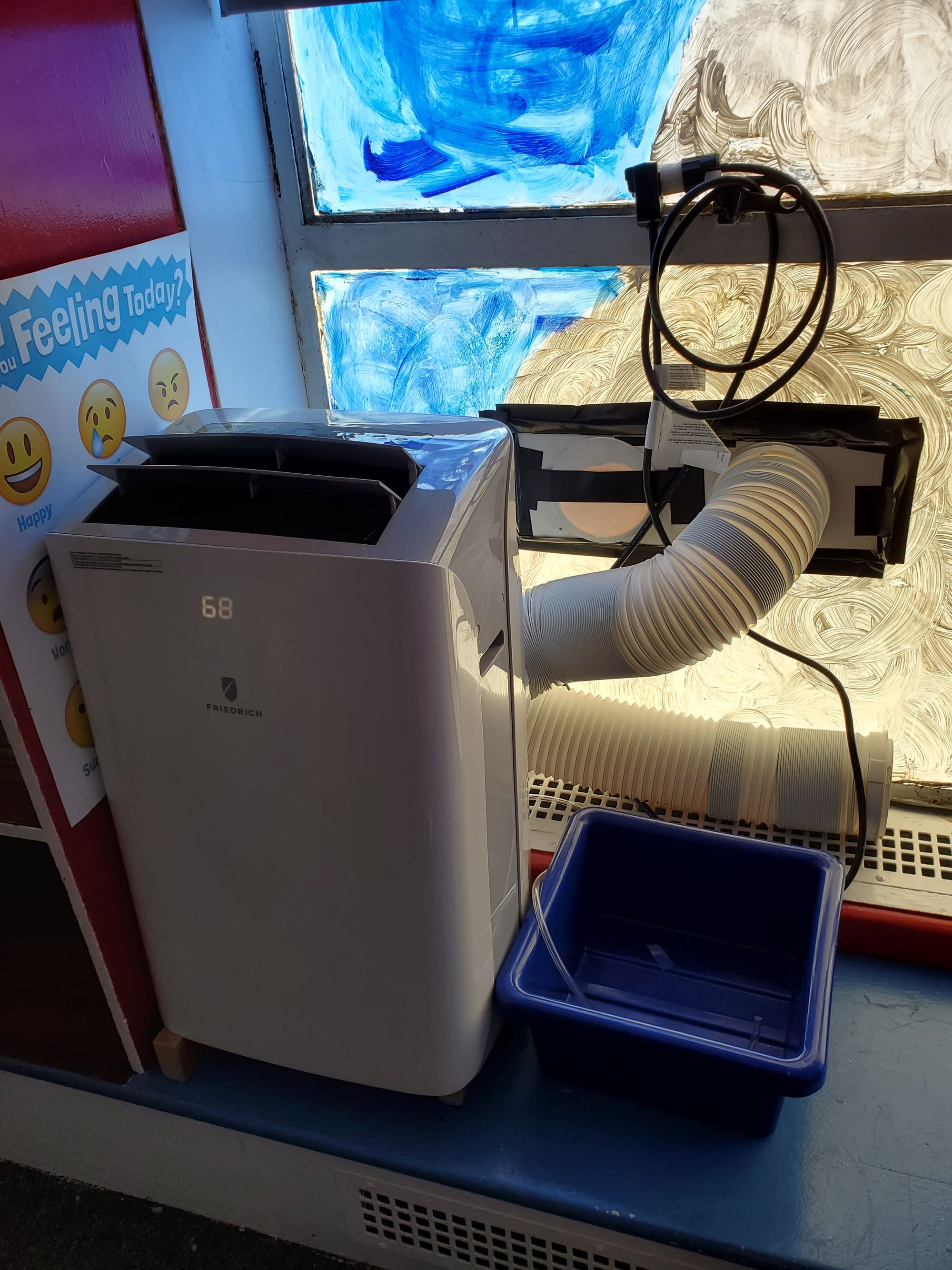
Engineering firm Weston & Sampson has been working on designs for the project, and Select Board Chair Michelle Prior said that “our hope is to get a sense of School Committee approval to proceed because we’re looking to take a vote and release an RFP using ARPA funds — so we’re on a timeline to try to get this work out to bid.”
ARPA funds must be allocated by the end of 2024.
Town Manager Beth Rudolph said the town needs a definitive decision by the Select Board on Monday whether to move forward with the project. Bid documents would then be ready from Weston & Sampson by mid-October.
The Select Board, however, has been looking to the School Committee to give its approval for the project since the building falls under its purview.
Rudolph said the School Committee submitted a list of questions in June about the project, to which the town supplied answers in July.
“So we’re really just getting everybody together to talk through next steps and schedule, prior to bidding the project,” Rudolph said.
School Committee member Chris Nixon raised concerns about earlier iterations of the project, including upgrades to portions of the heating system located in the “newer” wing of the building, but not in the colder back portion, which contains “the spaces that were just really uncomfortable for kids and staff.”
“If you guys are asking us to approve the project, I think it’s important for the School Committee to understand what it is we’re approving,” he added.
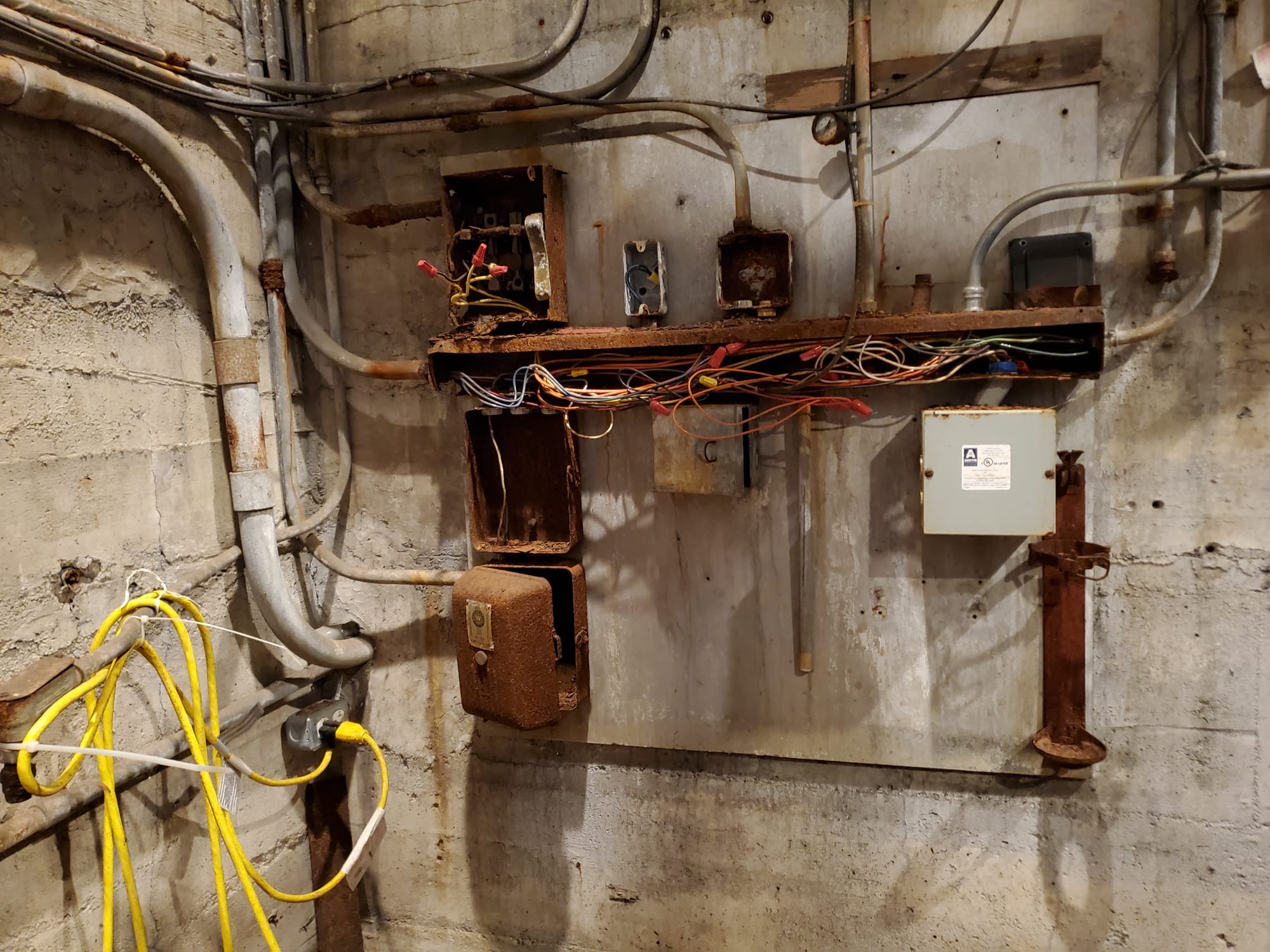
What’s in the design?
Scott Enriquez from Weston & Sampson presented the most recent design drawings to explain the scope of the project, which consists mainly of replacing the old heating system with a new VRF system for the front “lower half of the building.”
Additional funds would cover upgrading the current 400-amp service to 800-amp service, which would allow for upgrades in the back “upper half of the building” in the future and would also install a new electrical transformer.
“We do have scope and budget to investigate the heating problems in the upper section of the building, but we are going to be looking for some colder weather before we are able to execute that work,” said Enriquez.
What about the cold classrooms?
School Committee Chair Karen Bolognese pointed out that waiting for cold weather to investigate the heating issue in the upper portion of the building, where the coldest classrooms are located, would most likely not allow time to actually fix those problems this winter. Also, Enriquez confirmed fixing those areas would be “an additional cost.”
Rudolph interjected to remind everyone that, “the reason that the scope was designed in the way it was originally designed was to really focus on those areas of the building where we were most concerned about a failure of the steam heat system.”
Acknowledging “concerns about the additional annex spaces,” Rudolph said the town was hoping to use grant money to replace the windows in those rooms to alleviate some of the temperature issues, but that “those areas were not part of the areas that were originally prioritized” for replacement of the heating systems.
School Committee member Tom Hopcroft echoed Nixon and Bolognese’s concerns about ignoring the classrooms that have the most issues with cold temperatures.
“On the School Committee side in particular, we’ve been hearing from residents and DPW and Select Board about those rooms,” Hopcroft said. “I know we’re talking here about a different issue, a potential catastrophic failure in the future and about the maintenance that’s accelerating on these pipes, but the squeaky wheel that we’ve been hearing about literally since January has been those back rooms, up there.”
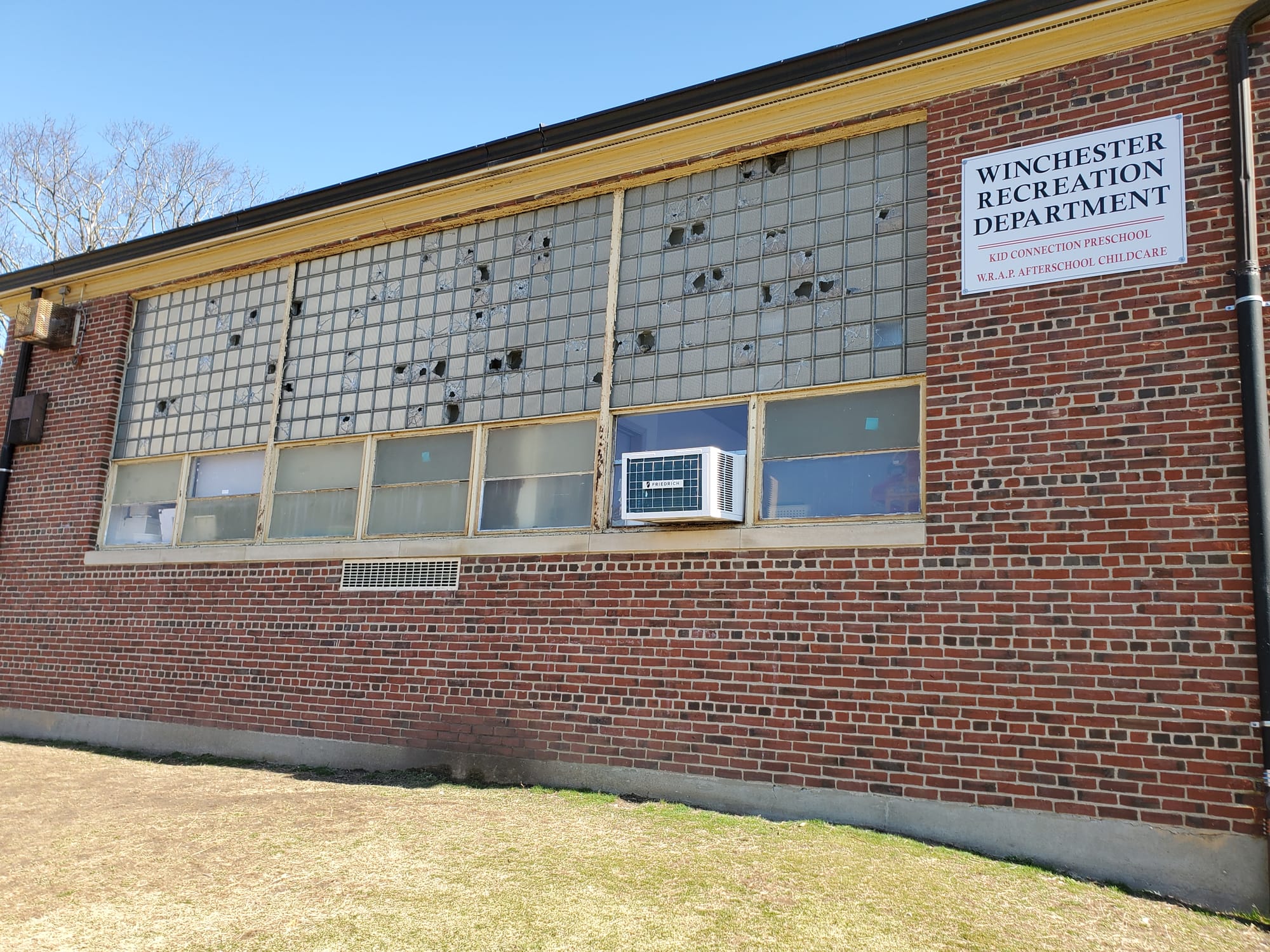
Nixon worried it hadn’t been made clear to the community that the focus was just on “the ancient steam piping” rather than on addressing the cold classrooms.
“There is a strong community expectation, understanding, belief, etc. that we are addressing that,” he said.
Nixon added there are some spaces in the building, which are included in Weston & Sampson’s current design for replacement, that contain newer piping (part of the 1950s addition and not the original 1923 wing), and asked if they could be left out of the project.
“If we don’t really have to do that, why not take that out of the scope and then the dollars that would go towards that might be reserved, redirected towards dealing with some of our chronically cold spaces up on the hill?” Nixon asked.
School Committee member Michelle Bergstrom added she had also understood the purpose of the project was to address “the chronically cold spaces.”
“If we were going to make a short-term plan to support the Mystic building, it was those spaces we were going to be identifying first, not working around the old steam system that was there,” Bergstrom said. “I feel like this scope has expanded over what we initially discussed and agreed to with the Select Board, and with town hall.
“I completely appreciate that the building does need some love and care, but I had thought that because the ARPA was short money and we had an immediate problem there, that was the area we were going to be addressing first,” she continued. “So, I’m kind of surprised to see the scope go beyond that, particularly into the lower-level spaces with the tenant because my understanding is those areas have been chronically warm already from the steam heat, not something that is cool.”
Bergstrom questioned whether, in light of the upcoming master plan and not being sure yet how Mystic school fits into that long term, if this is the best course of action.
When asked by Bolognese to “elucidate” on the evolution of the project, Rudolph stated the goal of the project was to keep the building and heating system “up and running” within the $900,000 identified, which led the town to focus on overhauling the old steam heat piping.
“We really identified this as an issue last fall and into December when we had a series of steam heat leaks throughout the building that required emergency asbestos remediation in an occupied space to repair,” Rudolph said. “It seems like the building got to a tipping point where last year we saw an acceleration of those leaks. [DPW Facilities Manager] Pete [Lawson] had already been working with a firm to look at ways [to] replace the heating system with a new heating system.”
Rudolph said the town put out an RFP in June for the replacement and it became clear during the process that the original cost estimates were “off by orders of magnitude.” Since the building is critical to the town, “the highest priority very quickly became ‘what do we do to keep this building up and running and deliver heat to as much of the building as we can so that we don’t have a critical failure’” and what could be done for $900,000 which the town had “mentally earmarked.”
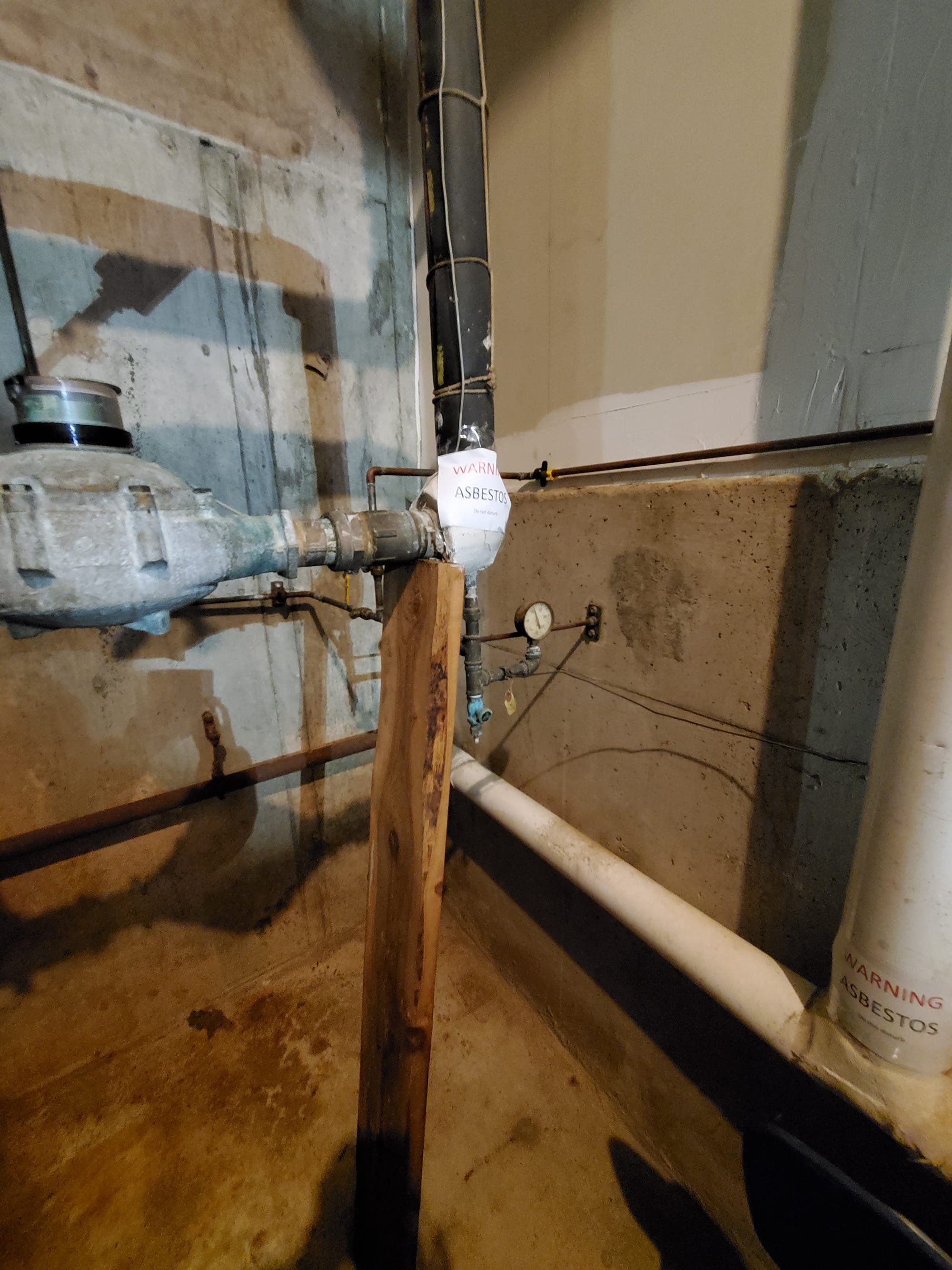
Lawson listed the two main goals as ensuring comfortable temperatures, and avoiding a “catastrophic failure in a system with leaking steam pipes with asbestos on them.”
“The decision was really guided by where we were having the most problems with those areas and so with the money that we were talking about, we decided to grab the core of the building and try to isolate out that amount of steam piping,” Lawson said. “So then we were dealing with a smaller area to support with maintenance and [trying to] figure out what was going on.
“The fact that it’s warm downstairs is because it’s sitting on poorly managed steam operation, and so isolating that off and eliminating the concern for [old] piping from failing was the priority,” Lawson said, of Bergstrom’s concern that the project addresses the warm rooms, but not the cold rooms.
Lawson said this latest design provides “the biggest bang for the buck” by avoiding major damage and emergency relocation of the occupants, extending the life of the building for a few more years, and allowing the master plan to guide what eventually happens to the building.
“To me, the big risk is the fear of dislocating kids in the winter in a time when we don’t have a good place to put them, and I’m not sure this project solves that fear [because of the timeline],” Nixon said. “If the thing were to blow up in January, I don’t think that we’d have the problem solved.”
Hopcroft said he understands the merits of fixing the system, but is concerned that it doesn’t address the issue of the “kids sitting in 40- to 50-degree classrooms.”
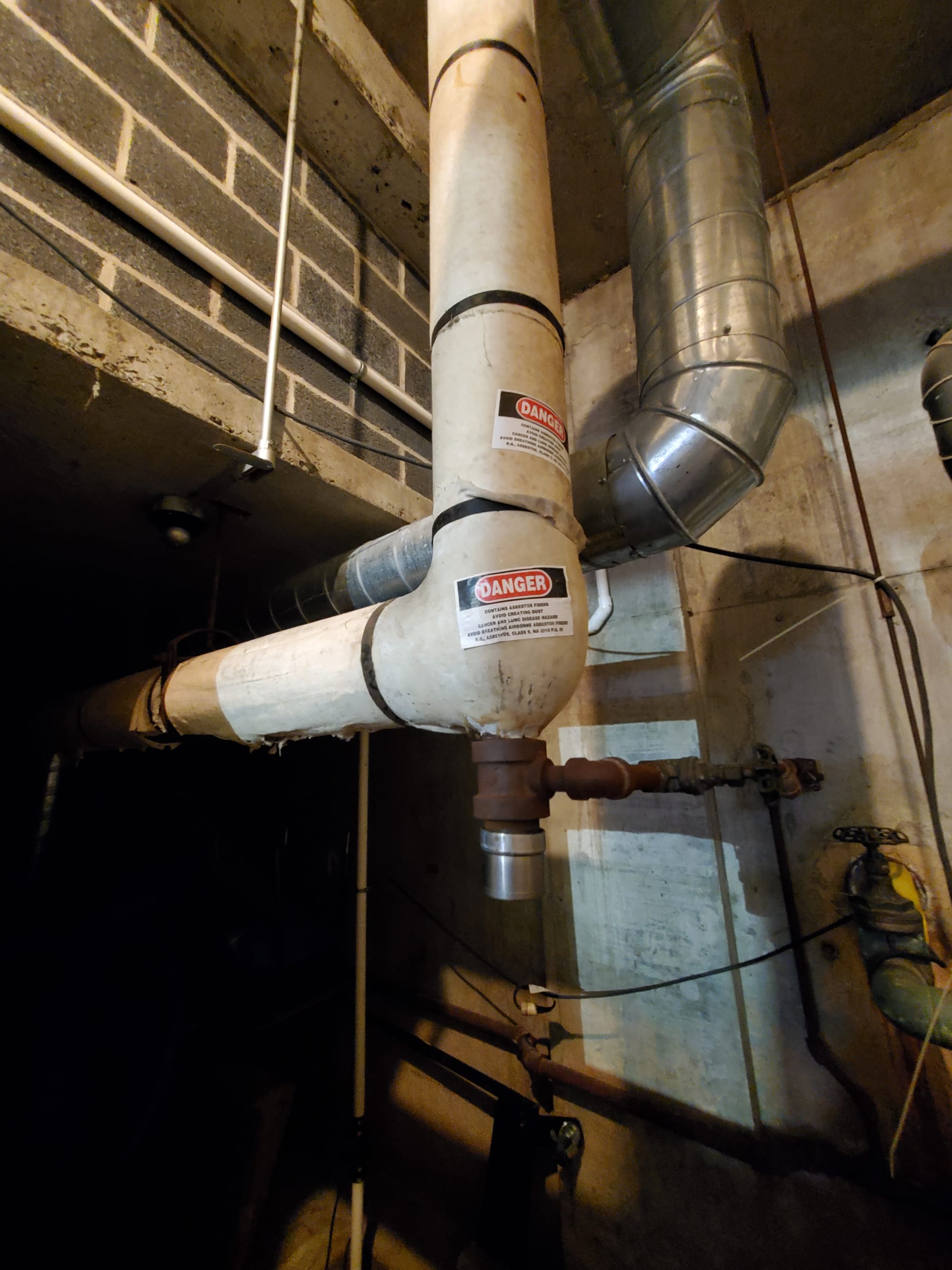
What will the School Committee do?
Select Board member Bill McGonigle sought to return to the main question of the meeting.
“I think we’re getting a little off course with a lot of our discussion right now,” McGonigle said, adding the Select Board has looked at a lot of options about how to deal with the heating issues at the Mystic School, and has put forth the current proposal. “The Select Board has a plan, a desire, and we have to make a vote as to whether or not we are going to try to solve at least one of the problems at the Mystic School — the problem of this aged piping covered in asbestos, and all of the risk that it is bringing.
“What I understood this discussion today to be focused on, and what we were hoping to get from the School Committee, is, if the Select Board wants to go down that path, is the School Committee going to be receptive to that and let us go forward with those plans?” he continued. “I appreciate all the discussion we’re having here about other potential options, but one thing I just really want to hear today is, if that’s the decision the Select Board makes, is the School Committee going to allow us to move forward with it? Please let us know now, so we can vote and start working appropriately so we can hit those deadlines.”
Select Board member Anthea Brady added that, although there are some questions about the long-term survival of the building, as of now, there is no plan to get rid of it and Winchester needs to preserve and maintain the building in the short-term.
Brady said the proposed plans are designed to carry the building through the next few years and “eliminate the DPW having to show up at four in the morning, trying to get rooms above 45 degrees.”
School Committee member Timothy Matthews questioned the merits of spending this money now when it wouldn’t actually prevent a catastrophic failure of the heating system this winter at this point, given “there might be an uncertain future for the building. But at the same time, I don’t really know that we have a great solution for where those programs would go if they moved out of the Mystic building.”
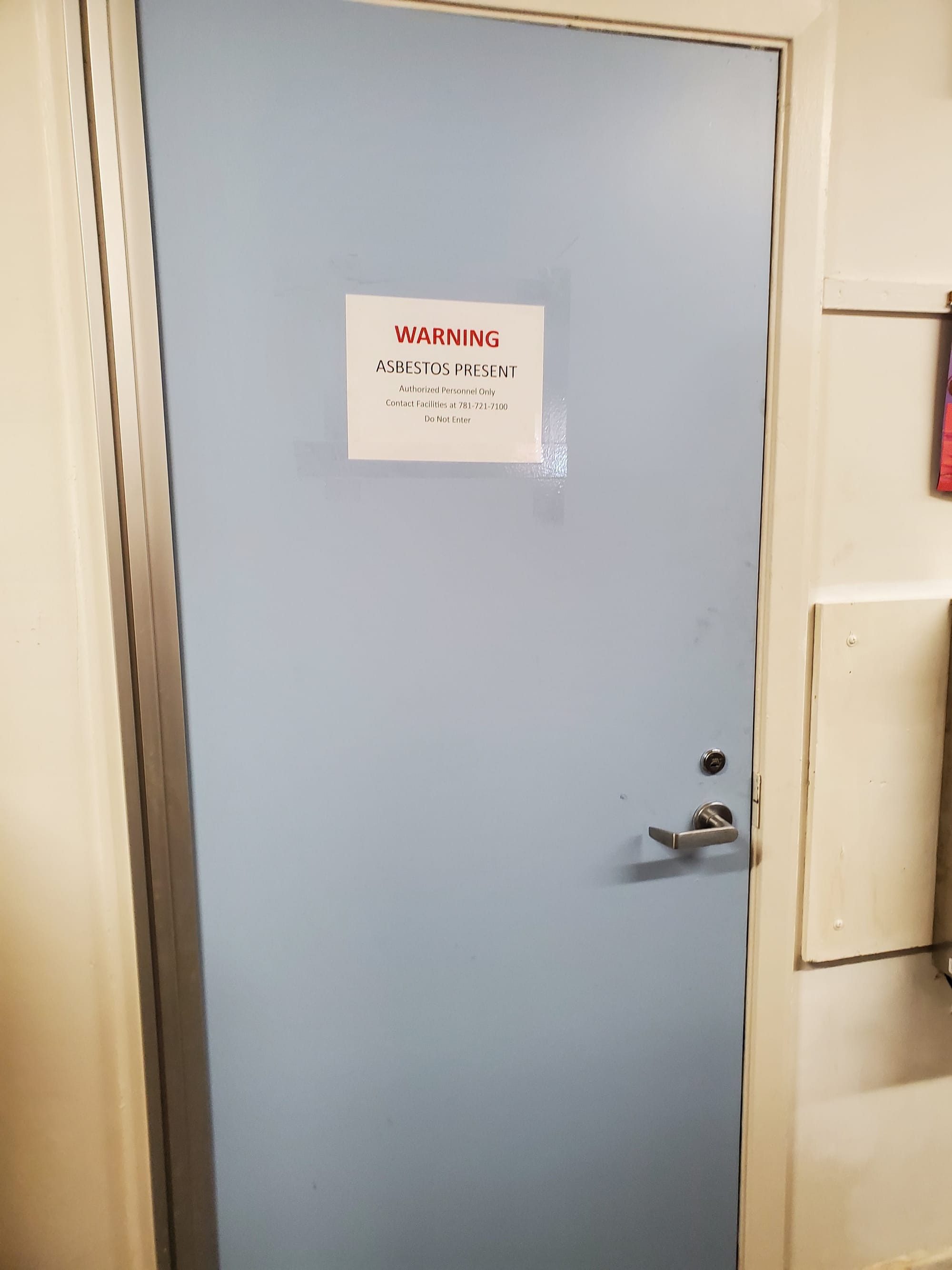
“We want to make sure that we are able to solve short-term problems, but be good stewards of town resources and town programs when we’re thinking about the future of Mystic, because, as the current owner of the building, we can’t just think about $900,000 of ARPA money in front of us, and how we’re going to spend it,” Bergstrom said. “We want to be more planful than that. So we’re not denying any critical issues with the heating, [but] there’s a larger policy discussion here about the programs at Mystic that before we invest a lot of town resources in the building that’s solving more of a long-term problem with the heating there, that we might want to have that conversation and it might involve the master planning process because it brings more voices even than just these two boards.”
Bergstrom said she was not comfortable voting until she sees the “95% plans” that Weston & Sampson will provide around Sept. 19 in case the cost changes significantly.
Nixon made a motion to “support the Select Board’s use of ARPA funds towards completion of bid documents and construction for the isolation of 1923 steam piping at the Mystic School and replacement with a VRF split system as presented.”
Rudolph said she was hesitant to isolate the scope to only the 1923 portion of the system since she “[doesn’t] know enough about the configuration of the connection of the 1920s piping to the 1950s piping.”
“The 1950s piping isn’t exactly new either so I don’t know enough to say that we can restrict the funding to just the 1920s portion of the building,” Rudolph said. “I think we have to rely to some extent on our designers to understand the way the system is put together and rely on their expertise to make this a project that will function for everybody, understanding we’re not trying to over-design or put too much money into this because we know the building [might not be there long-term].”
Bergstrom made a motion to amend Nixon’s motion, taking out the specificity about ARPA funding.
School Committee members voted unanimously in favor of the amended motion, limiting the scope to the 1920s portion of the heating system, and not tying the funding to ARPA money.

